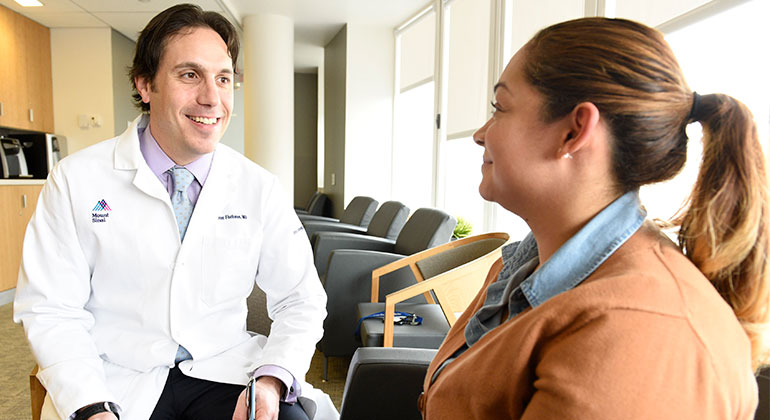End Stage Renal Disease/Hemodialysis

Interventional Radiology at Mount Sinai provides state–of-the-art treatment for creating and maintaining vascular accesses for hemodialysis patients. We have interventional radiologists and vascular surgeons skilled in the latest technology regarding evaluating, creating, and maintaining vascular accesses.
Our doctors are recognized leaders in hemodialysis access maintenance. They have penned numerous publications in major journals on the topic and have served as featured speakers at various hemodialysis conferences. Our nursing and technology staff is also trained to meet your needs and make your visit as comfortable and effortless as possible.
Multidisciplinary Approach
We feel that the team approach best serves the needs of dialysis patients. Monthly multidisciplinary conferences including interventional radiologists, vascular surgeons, nephrologists, and transplant surgeons help formulate the best plan for each patient. Once you are referred by a nephrologist, the first step typically involves vascular mapping (via ultrasound) to determine which access is optimal for you. We may also perform computed tomography venography, magnetic resonance imaging, or conventional venography. An effort is made to ultimately replace pre-existing catheters with primarily an arteriovenous fistula or, secondarily an AV graft. Mount Sinai Health System is one of the few health systems in the country dedicated to placing HeRO grafts. We are a training center for placement of this graft.
Specialized Vascular Access Maintenance Care
We are expert at maintaining vascular access. If a problem is detected, we determine the cause and fix any problem on the same day. For instance, we use balloon angioplasty or stent placement to address increased bleeding, inadequate dialysis, and recirculation. We also use high pressure balloons and cutting balloons designed specifically for narrowing vascular veins. This technology allows us to avoid using stents unnecessarily. If appropriate, we use self-expanding stents, covered stents, and flared stent technology.
We typically use ultrasound evaluation to determine the cause of a malfunctioning fistula or graft. Working closely with the Vascular Surgery Laboratory ultrasound technicians, we perform balloon angioplasty and coil embolization under ultrasound guidance. Should there be a thrombosis in the vascular access, our team can readily re-open the fistula or graft. We use anti-clotting agents, such as such as tPA and heparin, and mechanical devices, such as angioplasty balloons and rheolytic thrombectomy catheters, to perform thrombolysis. We also use mini-incision thrombectomy for clotted aneurysmal accesses.